Idea Tactics isn’t just for coming up with ideas for shiny new “creative” things like marketing campaigns; it’s a toolkit that can help you find smart solutions to almost any problem, even super technical ones!
In this post, you’ll find an example 2-day process using Idea Tactics based on a real-life scenario shared by a customer called Kevin.
Kevin works for a company that provides a service connecting banks to payment schemes. They have to rebuild their data centres once a month; if it goes wrong, this impacts multiple customers. So how might Kevin and his team mitigate issues and reduce risk of future disruptions?
This post walks you through one possible way of approaching this, tactic-by-tactic. The final output is one or more internal press releases explaining the problem and recommended solutions to senior stakeholders, securing their support for the work needed to minimise data centre disruption in future.
No two situations are exactly the same, so this might not be the perfect process for you, but you’ll get a better idea of how you might use Idea Tactics in a similar scenario. As always, feedback and questions are welcome in the #Idea-Tactics channel in our Slack community.
Preparation
Frame the challenge with How Might We?
Before Kevin gets his team together to generate ideas, it will be useful to spell out the challenge so everyone knows why ideas are needed. Using the How Might We? tactic, this could be worded as follows:
“How might we avoid issues with our monthly data centre rebuild and reduce the risk of future disruptions?”
This challenge can be circulated in advance and included in meeting invites.
Below, you’ll see I’ve split the process across 2 days – 1 day for exploring the problem and potential solutions, and a 2nd day for deeper, critical thinking about the top ideas from day 1, plus time for writing an internal memo that builds support and momentum for the work.
Day 1
Prime the group with Zen Spiral
When you’re facing a high-stakes situation where failure could be costly, it’s helpful to foster a sense of calm.
The Zen Spiral tactic helps everyone feel grounded and present, whilst also activating the brain’s Default Mode Network, readying everyone to make imaginative leaps.
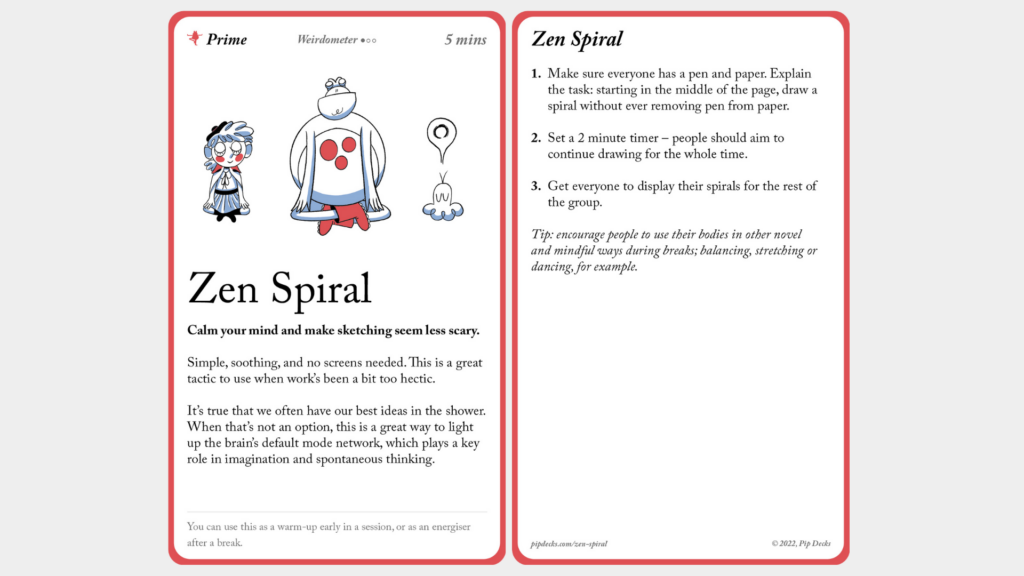
It’s also super-accessible for people that don’t love drawing or don’t consider themselves “creative”.
Bring the challenge to life with Perform the Problem
It’s essential that Kevin and his team have a clear, shared understanding of how exactly the data centre rebuild might go wrong.
The Perform the Problem tactic is a great way to bring one or more failure scenarios to life, so everyone has a vivid picture of what they’re trying to avoid.
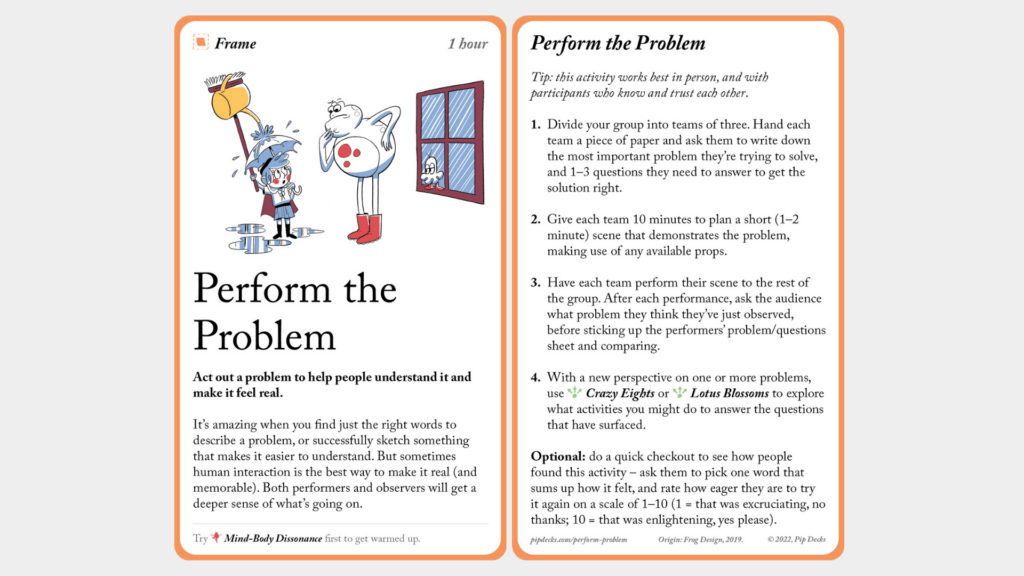
There’s no single “correct” way to to use this tactic, but for this challenge, someone might role-play as a bank, whilst someone else role-plays as a payment scheme, for example – to dramatise what happens if communication between those two actors breaks down.
This tactic can (and should) be used to show causes as well as effects – Kevin’s team could perform a sequence of events that lead to the rebuild failing.
Discussion should be welcomed at this point – understanding the problem is key.
Break down individual issues with Mind Map
Based on what surfaced during the last activity, there should now be a better understanding of the different ways the rebuild might fail, or the different factors that could contribute to failure.
Mind maps are a great way to capture these and also show how factors connect to each other.

I’ve imagined what this might end up looking like in this scenario (the real version would likely be way more specific):
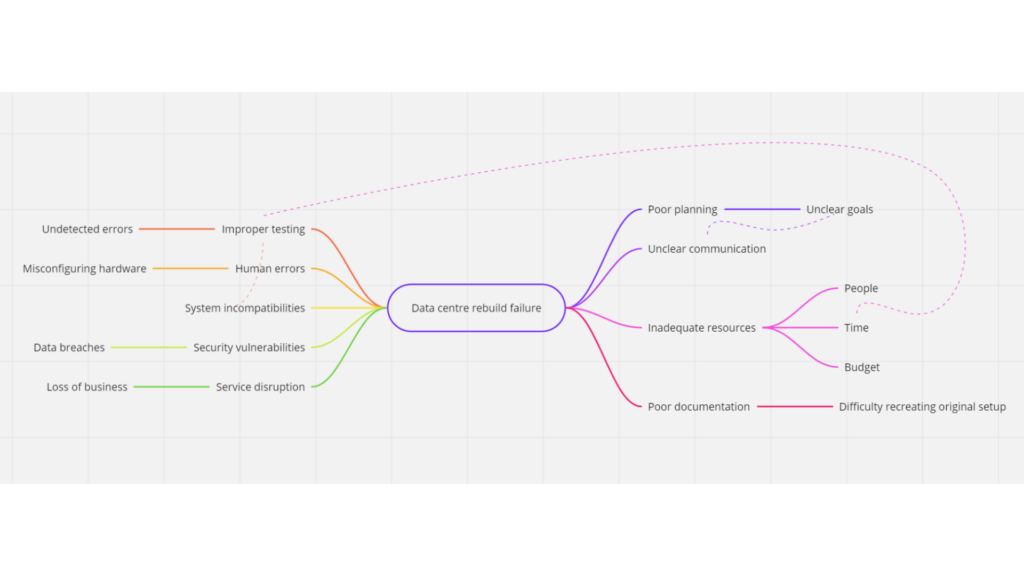
Each person would make their own Mind Map to deepen their understanding and refer back to later. These don’t necessarily need to be shared or discussed, but if there’s time, it certainly wouldn’t hurt!
This is a good natural point to schedule a break before coming back together for the next set of activities.
Energise everyone with Worst Idea Race
OK, now it’s time to shift into ideas mode. Worst Idea Race is the perfect tactic for getting people creatively warmed up, with absolutely no pressure to come up with anything usable.
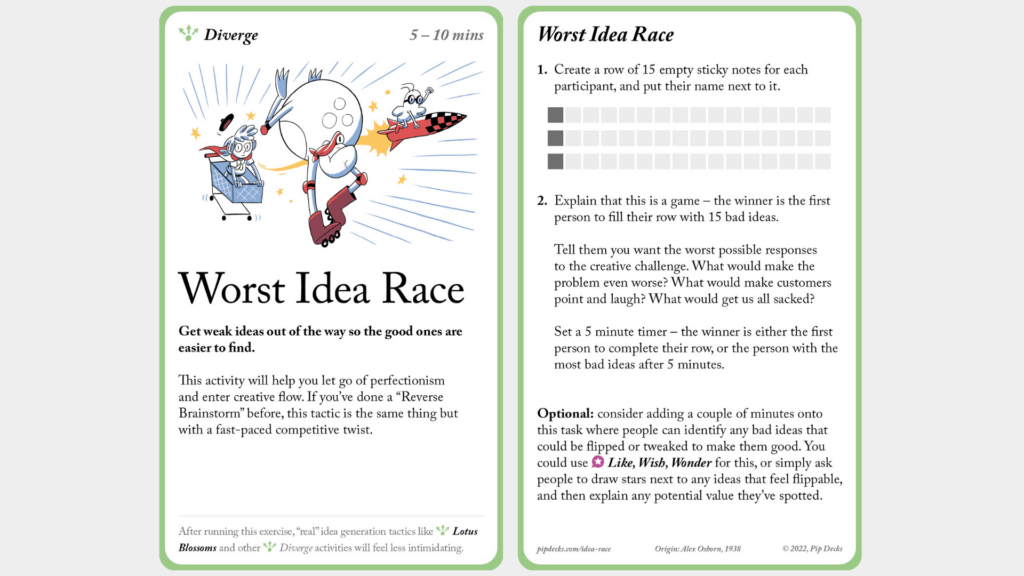
Kevin could frame this exercise by asking his team for ideas that would guarantee the next rebuild fails and they all lose their jobs.
This will have the added bonus of cementing the risks explored earlier so everyone’s clear about what issues need addressing.
Go wide with Lotus Blossoms
Next, it’s time to start exploring real ideas in response to the original challenge – “How might we avoid issues with our monthly data centre rebuild and reduce the risk of future disruptions?” – and drawing on anything interesting or insightful that emerged in Perform the Problem and Mind Map.
Kevin could ask each team member to find a theme or issue that feels particularly important on their mind map, then write it in the centre of their first lotus as the stimulus for problem-solving ideas. Ideally, each individual would ideate around a different theme – so a quick moment to compare notes would be useful here.
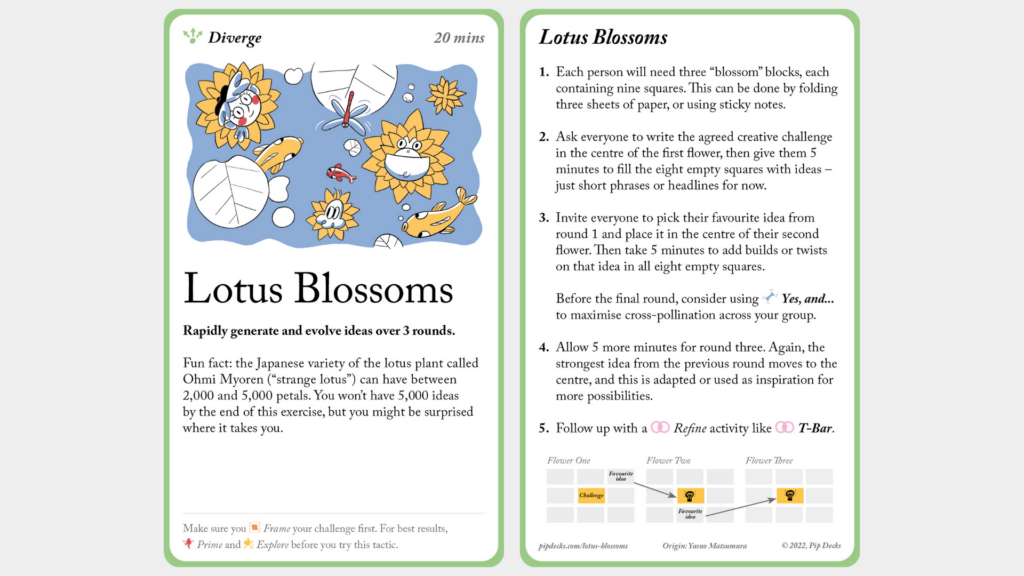
The goal with this tactic is to quickly generate lots of options without getting bogged down in the details. There should be no expectation of final answers or fully fleshed-out ideas at this stage, but there should be some seeds of ideas worth exploring further.
Here’s a simple example of what one person’s Lotus Blossoms output could look like for this tactic:
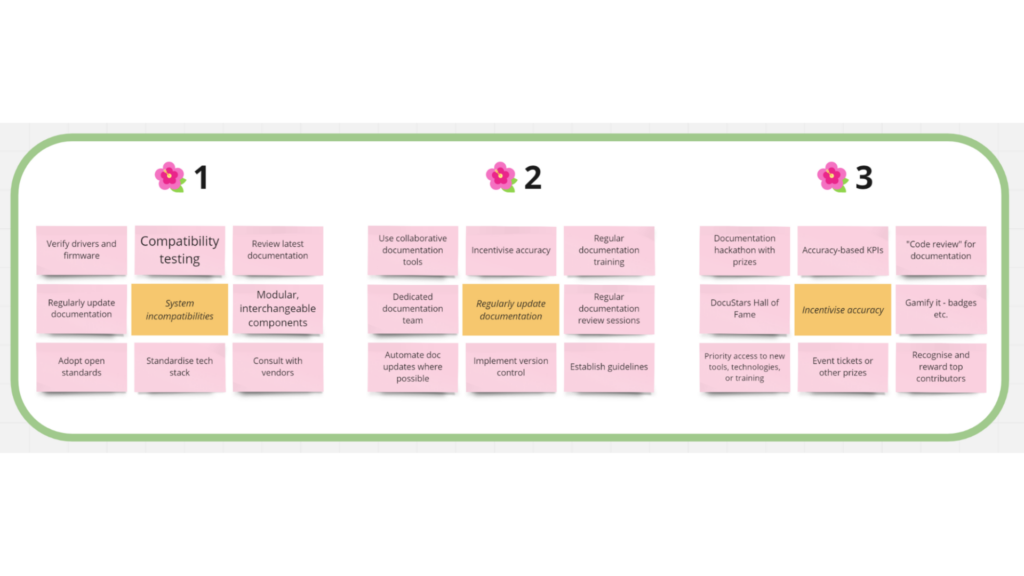
Find the most promising early ideas with Invest Your PipCoins
After everyone completes their Lotus Blossoms, Kevin and his team could use Invest Your PipCoins to identify which ideas seem to have the best balance of risk/reward, and are worth pushing further.
There might be strong ideas from any of the three lotus rounds, so it’s worth allowing people to place their investments wherever they see the most promise.
In general, you’re looking for the top 3-5 ideas worth developing.
Build on those ideas with Yes, and…
Yes, and… is a simple technique for building on each other’s ideas. Kevin would invite people to add an extension to any top-ranking ideas they didn’t come up with themselves.
As an example, someone might look at the “documentation hackathon” idea and think “yes, and we could invite people from different departments.”
Develop and distil ideas with T-Bar
Next, each person is given one top-ranked idea from the Lotus Blossoms exercise to flesh out as a T-Bar, using any Yes, and… builds from the last activity as extra idea fuel. Alternatively, the team can work on their T-Bars in small groups – the best way to run this depends on the size of the overall group and how many ideas you’re trying to develop.
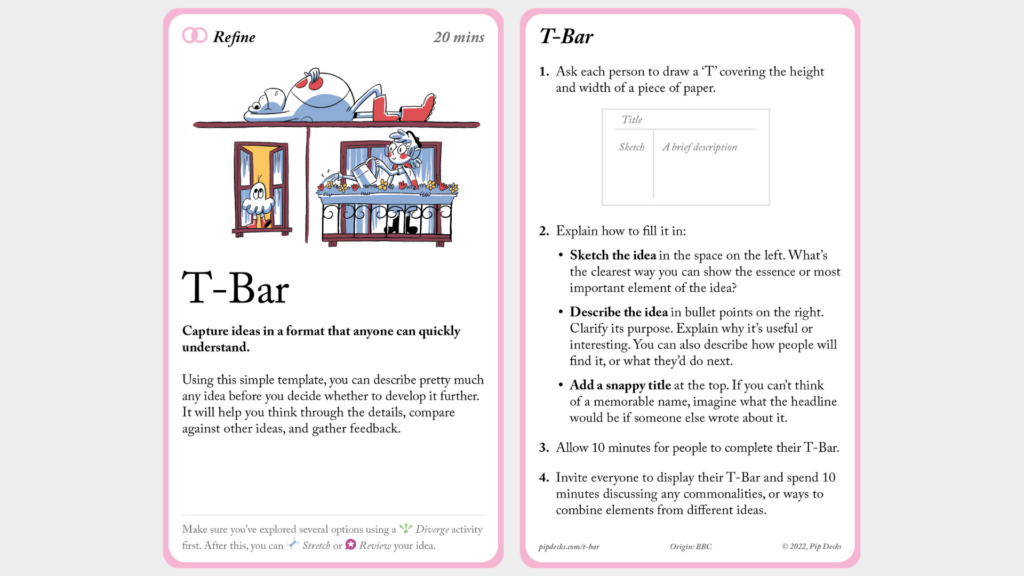
The aim here is to have a set of ideas expressed clearly enough that you can critique them thoughtfully and begin working through the finer details when you return tomorrow.
Day 2
As the Boss Mode card advises, making space for ideas to “incubate” usually leads to stronger solutions; coming back to your ideas with fresh eyes to critique them can help you be more objective. You could probably cram all the tactics listed in this post into a single day if you tried really hard, but the outputs would probably be weaker, and everyone would probably be exhausted. That’s why we’ve saved the final bunch of activities for day 2…
Stress test ideas with Concerns, Confusions, Conflicts
With the strongest ideas from day 1 captured on a set of T-Bars, now is the time to review them.
When you’re working on a high-stakes challenge like the one we introduced at the beginning of this post, and there are serious risks involved if bad ideas are pursued, it’s important to make space for everyone to consider (and voice) anything that seems wrong, incomplete, or uncertain about the ideas generated so far.
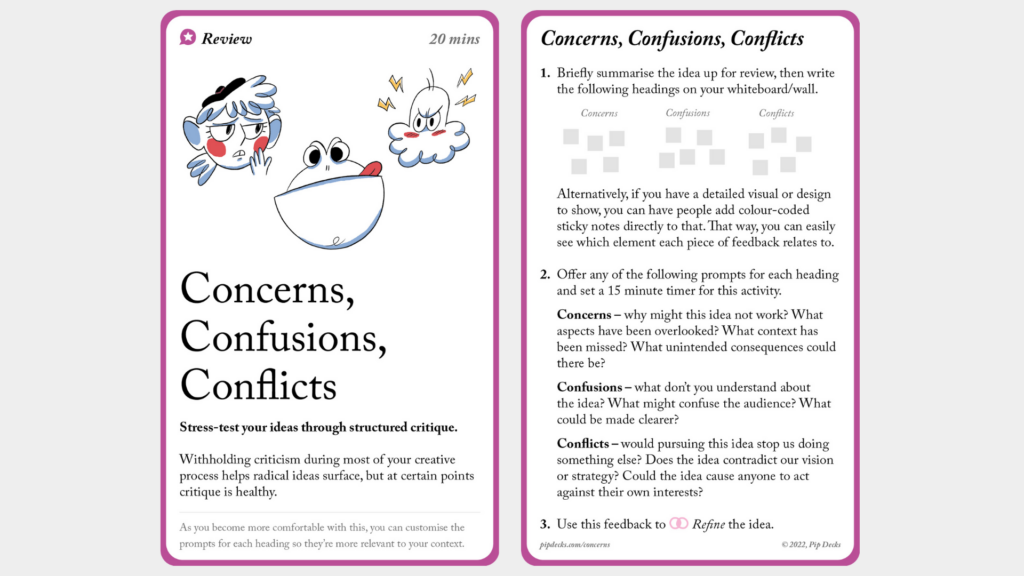
The Concerns, Confusions, Conflicts tactic gives everyone permission to speak honestly, and lets the team apply its intelligence and imagination to productively poking holes in ideas that claim to answer the challenge well.
If serious concerns, confusions, or conflicts emerge during this activity, Kevin and his team could do a revised round of T-Bars, updating ideas as needed, or scrapping any that, on reflection, won’t work.
Work through the finer details with Back and Forth
Whilst T-Bars are great for capturing the essence and key points of an idea, they’re pretty light on the detail. And with technical projects, detail is everything. That’s why I’d suggest using the Back and Forth tactic to start figuring out the specific steps or interactions involved in any ideas that involve user input and feedback, or multiple systems communicating with one another. By thinking through ideas as conversations, there will be fewer unknowns when it’s time to implement them.
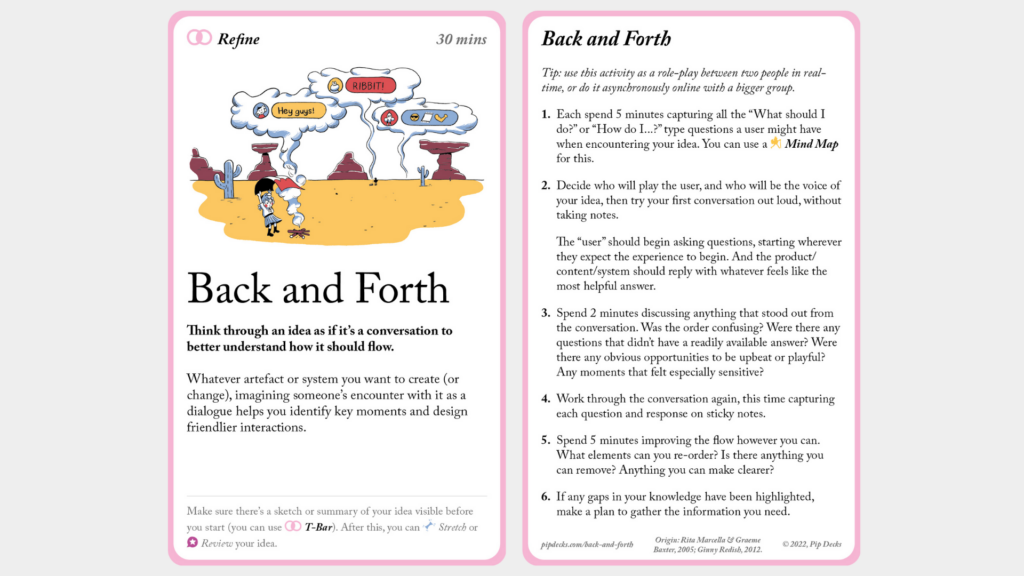
Here’s how that could look for an example idea – the ‘DocuStars’ hall of fame concept from the Lotus Blossoms earlier on:
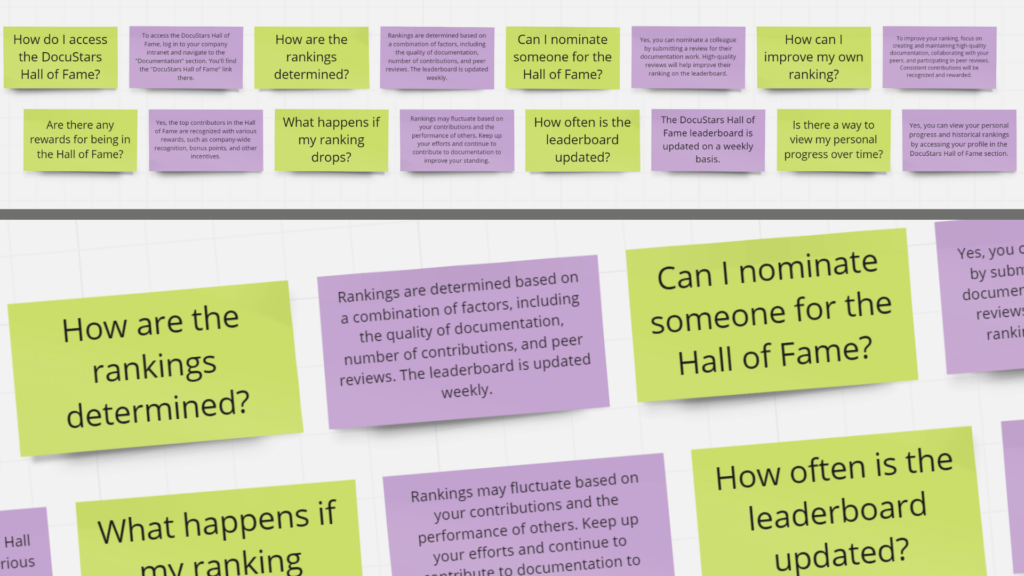
Get buy-in with Mega Memo
Once Kevin and his team have one or more ideas that they’re confident they could implement, and they believe will reduce problems in future, they’ll probably need to communicate these ideas internally to make sure they get the time, space, and investment to make the necessary changes, and to do a brilliant job.
Mega Memo is ideal for this – it’s a mini internal press release that summarises an idea, why it matters, and what successful implementation would mean, along with a clear next step.
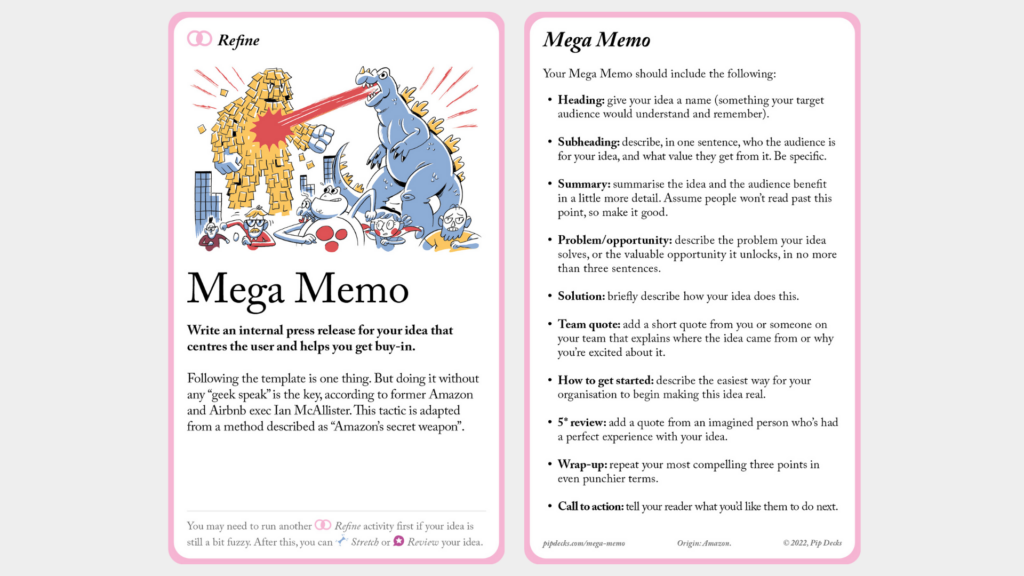
Kevin would produce one Mega Memo for each idea he wants to take forward, and share this with relevant senior stakeholders. Here’s an example of how that could look:
Heading: DocuStars Hall of Fame
Subheading: It’s time to take our documentation to the next level.
Summary: The DocuStars Hall of Fame is an internal leaderboard designed to recognise and reward employees who excel in data centre documentation. By showcasing top performers and fostering a sense of friendly competition, we aim to drive improvements in documentation quality, leading to more efficient and successful projects.
Problem: Inefficient and inconsistent documentation has been identified as a key challenge in our data centre rebuild projects. This can result in miscommunications, delays, and increased costs.
Solution: By acknowledging and rewarding top contributors, we can motivate all team members to take pride in their work and strive for continuous improvement.
Team quote: “Our goal with the DocuStars Hall of Fame is to spark a positive change in documentation practices, ultimately leading to more efficient projects and a stronger, more collaborative team.” – Jane Smith, Project Manager
How to get started: To implement the DocuStars Hall of Fame, we propose developing a platform on our company intranet and establishing clear guidelines for ranking contributions. We will present the initiative at an upcoming all-hands meetings.
5* review: “The DocuStars Hall of Fame has made a huge difference in our team’s commitment to documentation. Our projects are running more smoothly, and the friendly competition has brought us closer together as a team.” – John Doe, Data Center Engineer
Wrap-up: The DocuStars Hall of Fame is our chance to turn a challenge into a game-changer. By boosting documentation quality and teamwork, we’ll not only improve efficiency but also strengthen client relations and our bottom line. Let’s seize this opportunity, shake things up, and show the industry what we’re made of.
Call to action: The time to prioritise this is now. We can start prototyping next week.
This artefact can then also be used, along with T-Bars and outputs from Back and Forth, to estimate, scope, and plan the work required.
Are you using Idea Tactics on technical projects? Concocted your own fantastic recipes? We’d love to hear about it in the #Idea-Tactics channel on Slack! ✌️🧠✨

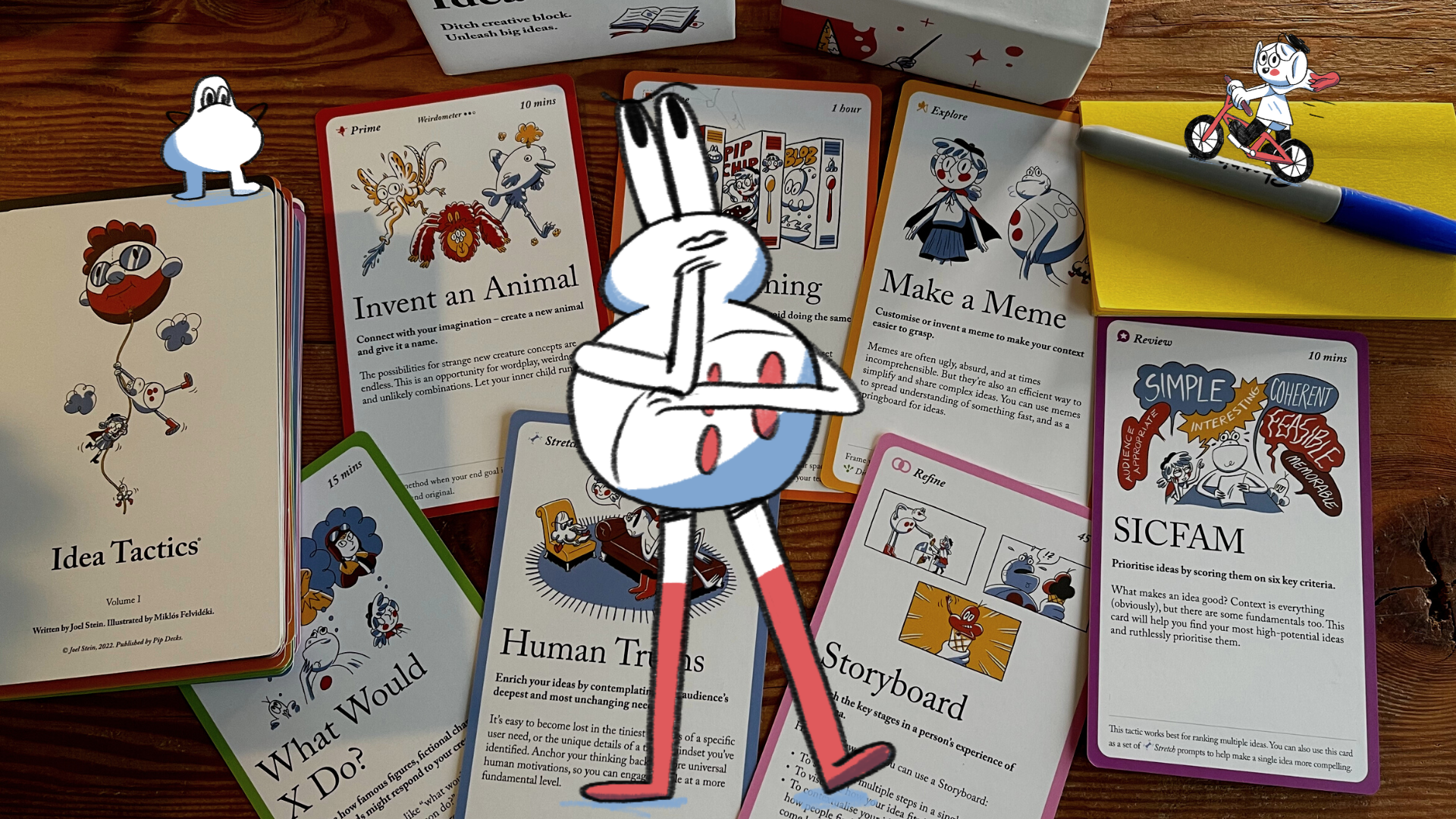
If you leave us your email, we'll let you know if we update this guide based on your feedback.